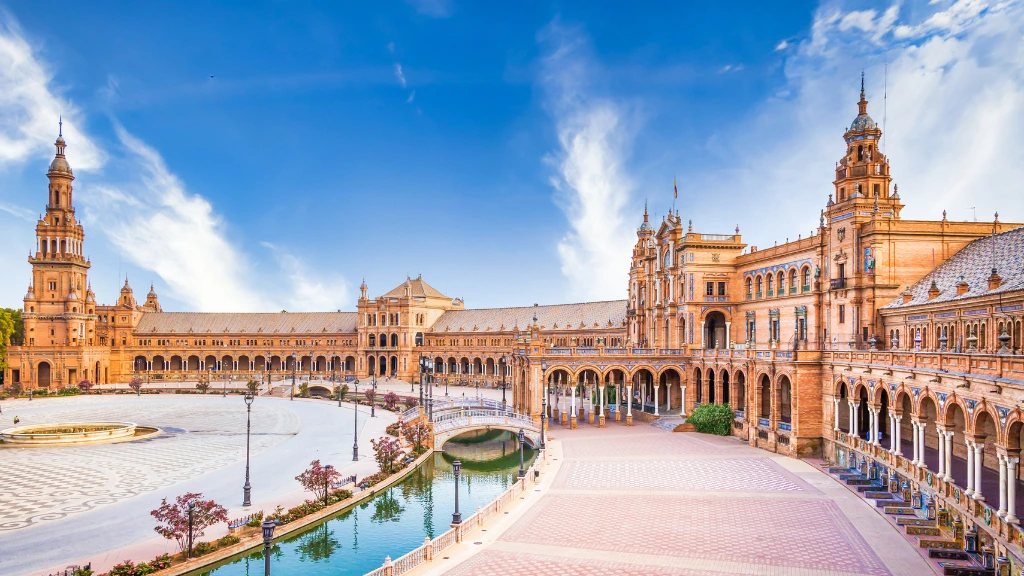Tourism is the heartbeat of many European cities, bringing vibrancy, income, and a dynamic flow of visitors who enrich the local economy. However, increased foot traffic can strain city infrastructure, challenge preservation efforts, and impact the quality of life for residents. Seville, Spain’s lively Andalusian capital, has recently announced a new tourist fee aimed at balancing visitor numbers with local sustainability.
This development follows in the footsteps of other European cities like Venice, Barcelona, and Amsterdam, which have implemented similar fees to promote responsible tourism and protect their heritage.
In this blog, we’ll break down why Seville’s new tourist fee is gaining attention, what it means for future travelers, and how it fits into the larger trend of sustainable tourism.
You May Also Like: Everything to Know About Japan’s New 6-Month Digital Nomad Visa for 2025
Why Seville is Introducing a Tourist Fee
Seville has long been a magnet for travelers, celebrated for its vibrant culture, rich history, and UNESCO World Heritage Sites like the Seville Cathedral, Real Alcázar, and the historic quarter of Santa Cruz. Yet, the influx of tourists has also placed pressure on the city’s infrastructure, raised property values, and prompted a need for increased maintenance of its historic attractions.
The tourist fee is intended to address these challenges by generating funds to support preservation projects, enhance public spaces, and manage the impact of mass tourism on Seville’s neighborhoods. It reflects a shift in global tourism policy that emphasizes the protection of cultural heritage and environmental sustainability.
1. How the Tourist Fee Works: What Visitors Should Expect
The proposed tourist fee in Seville will be applied per person, per night, and is expected to vary based on the type of accommodation. Here’s how it may be structured:
- Accommodation-Based Pricing: Higher-end accommodations such as hotels will incur a higher fee, while budget accommodations and hostels may have a lower rate. This tiered approach seeks to make the fee equitable and manageable for all types of travelers.
- Duration Limits: The fee is likely to apply only to the first several nights of a stay, ensuring that short-term visitors bear the bulk of the costs rather than long-term residents or repeat visitors.
- Collection and Allocation: Collected funds will likely go into a designated budget for preservation projects, improvements to public infrastructure, and the city’s tourism management initiatives.
For travelers, this fee will be added to the cost of accommodations, with some hotels including it in the booking price to simplify payment.
2. How the Fee Compares to Other European Tourist Fees
Seville’s new fee aligns it with other popular European destinations that have implemented similar charges to address the impacts of tourism. Here’s a quick comparison:
- Venice, Italy: Venice charges a daily tourist tax for visitors staying within its lagoon, with plans to introduce an additional entry fee for day-trippers starting in 2024.
- Barcelona, Spain: Barcelona introduced a tourism tax several years ago, with rates based on the type of accommodation and length of stay. Funds go toward managing tourism impacts and enhancing city infrastructure.
- Amsterdam, Netherlands: Amsterdam has one of the highest tourist fees in Europe, charging both a fixed per-night fee and a percentage of the accommodation cost. This fee is used to support city preservation efforts.
The rising number of cities adopting tourism fees highlights a larger trend of promoting sustainable tourism. As visitor numbers increase globally, particularly in culturally significant cities, these fees provide a funding source for necessary infrastructure improvements and conservation efforts.
3. What the Fee Means for Travelers
While additional fees might seem inconvenient, understanding the purpose and impact can help travelers appreciate their role in preserving the destinations they love. Here’s what travelers can expect:
- Budget Adjustments: Travelers should anticipate a slight increase in their overall trip cost. Depending on the length of stay, accommodation choice, and travel budget, this fee can range from minimal to more significant.
- Enhanced Public Spaces: The funds generated by the tourist fee will directly benefit travelers by improving public spaces, supporting cultural projects, and maintaining attractions.
- Responsible Tourism: By contributing to the city’s upkeep, tourists become active participants in preserving Seville’s charm for future visitors. This is particularly meaningful in a city with historic sites that require consistent maintenance.
If you’re planning a visit, consider incorporating the tourist fee into your travel budget as a contribution toward the city’s sustainability efforts.
4. Exploring Seville Responsibly
With the introduction of this fee, visitors can embrace a responsible tourism mindset to maximize their experience while respecting Seville’s cultural and social environment. Here are some tips for making your stay sustainable:
- Choose Local Businesses: Support small businesses, local restaurants, and artisans to ensure that your spending directly benefits the community.
- Respect Public Spaces: Seville’s plazas, parks, and historic sites are beautiful but delicate. Avoid leaving waste, follow guidelines at landmarks, and treat public spaces with care.
- Visit During Off-Peak Seasons: While Seville is popular year-round, visiting during less crowded months like late fall or early spring can reduce the strain on city resources and offer a more relaxed experience.
Embracing sustainable travel not only helps Seville maintain its character but also enriches your visit by fostering a deeper connection with the city.
5. How This Fee Reflects Broader Trends in Global Tourism
Seville’s new tourist fee isn’t an isolated case; it represents a shift toward sustainable tourism across the globe. Cities with strong cultural and historic heritage are increasingly using tourist fees to control overcrowding, fund infrastructure, and preserve their unique character.
These fees are not merely about generating revenue. Instead, they reflect an evolving philosophy that seeks to protect the integrity of each city while allowing for steady tourism growth. For instance:
- Increased Traveler Awareness: Visitors today are more conscious of their impact, with many showing support for sustainable practices. Tourist fees align with these values, enabling travelers to contribute positively to the places they visit.
- Quality Over Quantity Tourism: By implementing fees, cities can encourage higher-quality tourism that prioritizes long stays, cultural engagement, and environmental respect over short-term, high-volume visitation.
- A New Tourism Economy: These fees are part of an emerging approach that sees tourism as a partnership between visitors and residents, benefiting both parties in a balanced way.
Planning Your Seville Visit with the Tourist Fee in Mind
If Seville’s new tourist fee is implemented, here’s how you can plan around it:
- Research Your Accommodation: Confirm with your hotel or rental whether the fee is included in the booking cost.
- Plan a Budget: Add this fee to your daily expenses, along with any other city-specific costs like local transportation.
- Consider Off-Peak Travel: Visiting during the shoulder season can help you save on costs while enjoying a quieter Seville experience.
- Support Local Initiatives: Whether it’s a walking tour or a dining experience, look for ways to contribute to the local economy in meaningful ways.
Conclusion: Seville’s Tourist Fee and the Future of Travel
As Seville prepares to roll out its new tourist fee, travelers have the opportunity to be part of a sustainable shift in tourism. With funds directed toward conservation, infrastructure, and city improvements, this fee is a step forward in preserving Seville’s unique identity and cultural heritage.
For those planning a trip, understanding the purpose behind this fee can lead to a more meaningful visit, knowing that your contribution supports the city’s longevity and quality of life for residents. With a balanced approach, travelers and locals alike can continue to enjoy the vibrant beauty of Seville for years to come.










